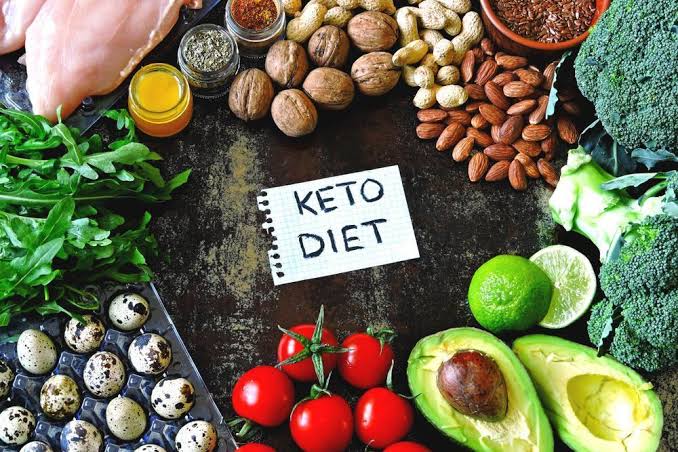
Introduction to the Keto Diet
The ketogenic diet, or keto diet, is a low-carb, high-fat diet that has gained popularity for its potential benefits in weight loss, improved blood sugar control, and increased energy levels. The diet focuses on consuming foods that are high in healthy fats, moderate in protein, and very low in carbohydrates. While the emphasis is on limiting carb intake, it is important to ensure an adequate intake of dietary fiber for optimal digestive health and overall well-being. We’ll dive right into the best sources of fiber
Importance of Fiber on the Keto Diet
Fiber is an essential nutrient that plays a crucial role in maintaining a healthy digestive system, regulating blood sugar levels, promoting satiety, and supporting overall gut health. Despite being on a low-carb diet, it is essential to include sources of fiber in your meals to avoid potential digestive issues and nutrient deficiencies.
Challenges of Obtaining Fiber on the Keto Diet
One of the challenges of following a keto diet is that many high-fiber foods are also high in carbohydrates. This can make it difficult to meet the recommended daily fiber intake, which is around 25 to 30 grams for adults. However, with careful planning and the right food choices, it is possible to incorporate fiber-rich foods into a keto diet without compromising its principles.
Best Sources of Fiber on the Keto Diet
Here are some of the best sources of fiber that are low in net carbs and suitable for the keto diet:
Chia Seeds
Chia seeds are a superfood that is packed with fiber, omega-3 fatty acids, and antioxidants. Just one ounce (28 grams) of chia seeds provides a whopping 10 grams of fiber, with only 1 gram of net carbs. They can be added to smoothies, sprinkled over salads, or used to make chia pudding for a delicious and fiber-rich keto-friendly snack.
Flaxseeds
Flaxseeds are another excellent source of fiber on the keto diet. They contain both soluble and insoluble fiber, which helps promote healthy digestion. With around 8 grams of fiber per ounce (28 grams), flaxseeds are a great addition to keto-friendly baked goods or can be ground and used as a topping for salads or yogurt.
Avocados
Avocados are not only rich in healthy fats but also a good source of dietary fiber. Half of a medium-sized avocado provides approximately 6 to 7 grams of fiber, with only 2 grams of net carbs. They can be enjoyed on their own, sliced over salads, or used as a creamy base for dips and spreads.
Broccoli
Broccoli is a cruciferous vegetable that is low in carbs and high in fiber. One cup of cooked broccoli contains around 5 grams of fiber and only 4 grams of net carbs. It can be steamed, roasted, or sautéed with healthy fats to create a delicious and fiber-packed side dish.
Brussels Sprouts
Brussels sprouts are another fiber-rich vegetable that fits well into a keto diet. With approximately 4 grams of fiber per cup, Brussels sprouts also provide essential vitamins and minerals. Roasting them with olive oil and seasonings enhances their flavor and makes them a tasty addition to any keto meal.
Nuts and Seeds
Nuts and seeds, such as almonds, walnuts, pumpkin seeds, and sunflower seeds, are excellent sources of fiber on the keto diet. They not only provide fiber but also offer a wide range of nutrients and healthy fats. Incorporating a handful of nuts or seeds into your snacking routine can help boost your fiber intake while adding variety to your diet.
Coconut Flour
Coconut flour is a popular alternative to traditional grain-based flours on the keto diet. It is low in carbs and high in fiber, with approximately 10 grams of fiber per ounce (28 grams). Coconut flour can be used in keto baking recipes to add fiber and texture to breads, pancakes, and other treats.
Incorporating Fiber-Rich Foods into the Keto Diet
To maximize your fiber intake on the keto diet, aim to include a variety of fiber-rich foods in your meals. You can create a delicious and satisfying meal plan by incorporating fiber-rich vegetables, seeds, and nuts into your salads, side dishes, and snacks. Experiment with recipes that include chia seeds, flaxseeds, and coconut flour to add fiber to your baked goods and smoothies.
Here are some meals with high fiber!
https://www.eatingwell.com/gallery/7993581/low-carb-high-fiber-dinner-recipes
Conclusion
While the keto diet focuses on low-carb foods, it is essential to incorporate sources of dietary fiber to support digestive health and overall well-being. Chia seeds, flaxseeds, avocados, broccoli, Brussels sprouts, nuts, seeds, and coconut flour are all excellent choices for obtaining fiber while following the keto diet. By including these fiber-rich foods in your meal planning, you can maintain a healthy gut, support digestion, and optimize your keto lifestyle.
Frequently Asked Questions (FAQs)
Can I consume too much fiber on the keto diet?
- A: It is important to balance your fiber intake, as consuming excessive fiber can lead to digestive discomfort. Start by gradually increasing your fiber intake and listen to your body’s signals to find the right amount for you.
Are there any keto-friendly supplements available for sources of fiber?
- A: Yes, there are keto-friendly fiber supplements available, such as psyllium husk powder or soluble fiber capsules. However, it is generally recommended to obtain fiber from whole food sources for optimal nutrition.
Can I use fruits for sources of fiber on the keto diet?
- A: While fruits contain natural sugars and are higher in carbs, some low-sugar fruits like berries can be consumed in moderation on the keto diet. Berries are also a good source of fiber, making them a suitable choice for those following a keto lifestyle.
How can I track my fiber intake on the keto diet?
- A: You can use various nutrition tracking apps or websites to track your daily fiber intake. These tools provide detailed information on the fiber content of different foods and can help you monitor your overall fiber consumption.
Can I use fiber supplements as a substitute for sources of fiber on the keto diet?
- A: While fiber supplements can be used occasionally, it is generally recommended to prioritize whole food sources for fiber intake. Fiber-rich foods provide a wider range of nutrients and offer additional health benefits beyond just fiber content.


